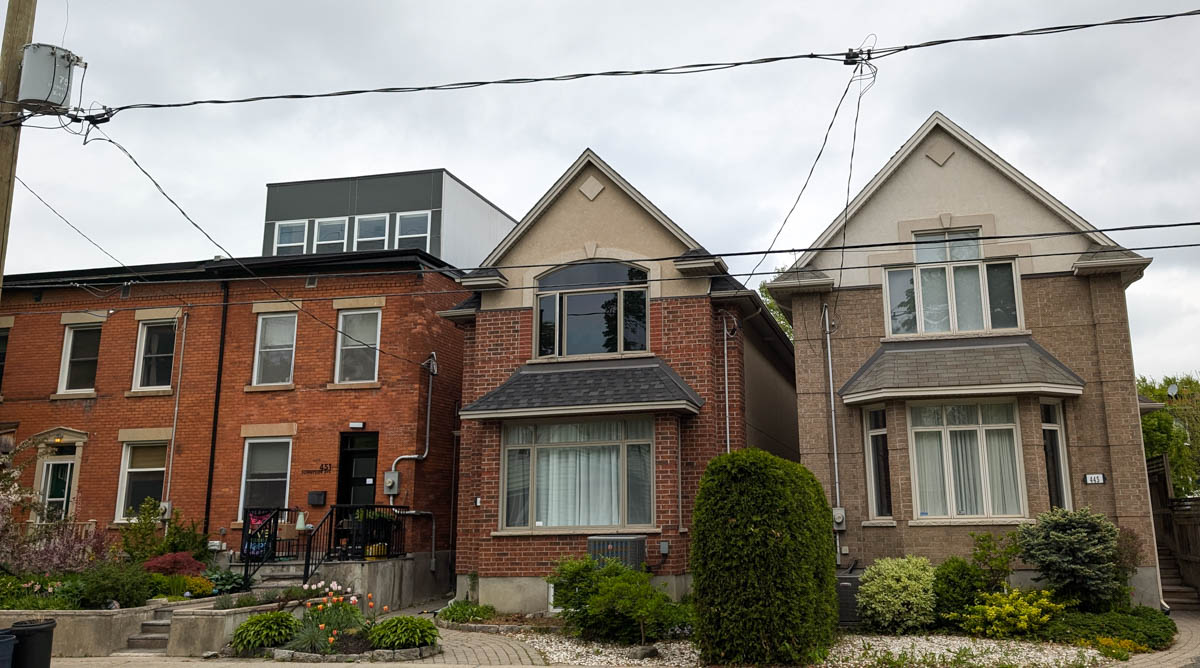The University of Ottawa Student Union has released its 2024-2025 Student Housing Report, which highlights the challenges facing students who live in off-campus housing and urges the City of Ottawa to do more to address the crisis.
The UOSO gathered survey data from 420 students to learn more about the costs of housing and their living conditions. The results paint a bleak picture of how the ongoing national housing crisis is intensifying the struggles students have always faced to find affordable and adequate living arrangements.
“We acknowledge that the housing crisis is in fact the housing market working as intended for the very wealthiest stakeholders in our city,” the report concludes. “But in its current heightened form, students have become the canary in the coal mine for the housing crisis facing everyone.”
The report found the average monthly rent for a University of Ottawa student living off campus is $926.67. The average rent for students living in properties owned by corporate landlords, however, is significantly higher, just under $1,100.
Students surveyed said finding even these expensive living spaces was difficult, as 52 per cent of respondents said they were challenged just locating a place to live.
“Places go so fast that there were time(s) we scheduled to see the place and within a few hours . . . the tour was cancelled because someone else secured it,” said a student quoted in the report.
Safety and satisfaction with living spaces was also a huge concern flagged in the report.
“I didn’t have a smoke alarm in my room, which isn’t legal,” a student interviewed for the report said. The landlord “ended up boarding my window with plywood, and so not only do I not have a window, but in case there was a fire outside my room I really wouldn’t have an exit.”
The report concluded with recommendations directly aimed at the University of Ottawa, as well as the municipal, provincial and federal governments.
UOSO asked the City of Ottawa in particular to focus on creating financial and zoning incentives for nonprofit organizations to build affordable and sustainable student housing, while also encouraging them to establish affordable housing incentive zones within a five-kilometre radius of postsecondary institutions.
The report authors also requested that the city allocate funds for land trusts that can acquire properties to develop and preserve affordable units.
“Is that really legal?”
The uOttawa report was brought before the city’s May 21 planning and housing committee by committee chair Jeff Leiper, councillor for Kitchissippi ward.
A delegation of students from the UOSO presented the report’s findings to the committee.
“You’ll meet lots of students who live in housing where you’ll question, ‘Is that really legal?’ You’ll go in and it’s not supposed to be a two-bedroom, but they put up a wall. They made up a bedroom so they’re charging students for a two-bedroom or a three-bedroom for what is legally a one-bedroom, and they’re getting away with this even though there’s no window and it’s not even a real wall.”
— Elnaz Enayatpour, member of the uOttawa Student Union housing caucus.
“The student experience is no longer you have a part-time job, full-time course load and a social life,” said UOSO advocacy commissioner Alex Stratas. “Now it’s you have three part-time jobs, a full-time course load and you’re failing and you’re skipping meals.”
The student representatives shared with committee members many of the experiences they’d heard about from students they’d spoken with.
“You’ll meet lots of students who live in housing where you’ll question, ‘Is that really legal?’ ” said Elnaz Enayatpour, a member of the UOSO housing caucus. “You’ll go in and it’s not supposed to be a two-bedroom, but they put up a wall. They made up a bedroom so they’re charging students for a two-bedroom or a three-bedroom for what is legally a one-bedroom, and they’re getting away with this even though there’s no window and it’s not even a real wall.”
Councillors expressed interest in the student team’s findings, and congratulated them for conducting and presenting the research.
“This is one of the best reports we’ve seen in the committee since I was elected,” said Somerset Coun. Ariel Troster. “I think it’s really important that you paint this picture, because students are residents of this city, too.”
Troster said her ward, which encompasses Centretown, Chinatown, Little Italy and LeBreton Flats, sees a lot of questionable practices in regards to student housing, such as renovictions of people on the verge of homelessness in order to charge students an inflated $1,500 a month on the basis that their room, for example, has a flat-screen television.
Leiper said he was impressed not only by the students’ proposals, but by his fellow councillors’ willingness to talk with them.
“Students are a critical part of this city,” Leiper said to the delegation after they took questions from councillors. “I personally believe that if we built the kind of city that you’re asking us to build, it would be a much better city.”
While councillors, student advocates and housing advocates may call for different solutions to the problems raised by the report, there was clear agreement that the landlord malpractice, supply shortage and other challenges highlighted by the researchers need to be solved.
“This is a symptom of a lack of supply,” Enayatpour said. “The more supply there is, the less stingy it can be.”




